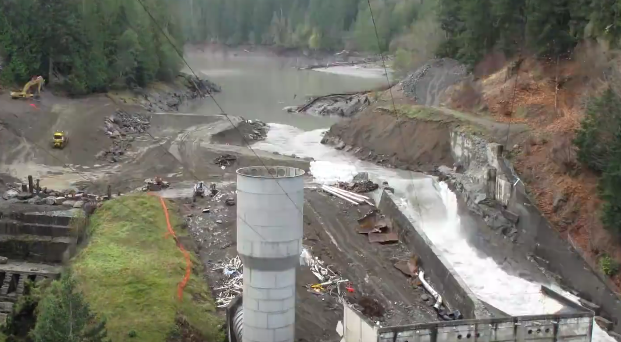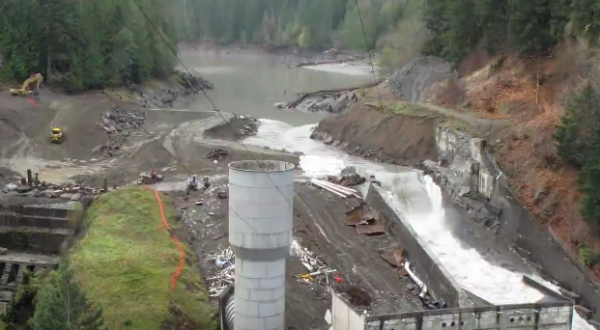By
A new $50 million fund will help communities remove “deadbeat dams,” starting in California, Oregon, and Washington.
Within a decade, the Yakama people of south-central Washington State should be able to harvest salmon once again with spears, nets, and other traditional methods along tributaries of the Yakima River.
“We want to return to serving as stewards of the land,” says Philip Rigdon, the deputy director of natural resources for the Yakama Nation.
To make that possible, the Nelson Dam needs to come down first. The eight-foot high irrigation diversion dam on the Naches River sits just upstream of the City of Yakima on the largest tributary of the Yakima River, which flows into the Columbia River. Built in the 1920s, the now unneeded dam blocks the movement of salmon through the area, choking off the ecosystem’s lifeline.
But once the dam is taken out—by 2020, proponents of the removal hope—it will allow fish and nutrients to flow downstream. It will also reduce the risk of flooding in the area. (Learn more about the rapid restoration of a river after dam removal.)
And perhaps surprisingly, removal of the dam will actually increase the water and climate resilience of the area, says Michael Scott, acting director of the environment program of the William and Flora Hewlett Foundation. That’s because pooling water in a reservoir leads to more evaporation, while sending water downstream means it can recharge natural aquifers.
After Largest Dam Removal in U.S. History, This River Is Thriving | National Geographic
[youtube id=”VipVo8zPH0U” width=”620″ height=”360″]



